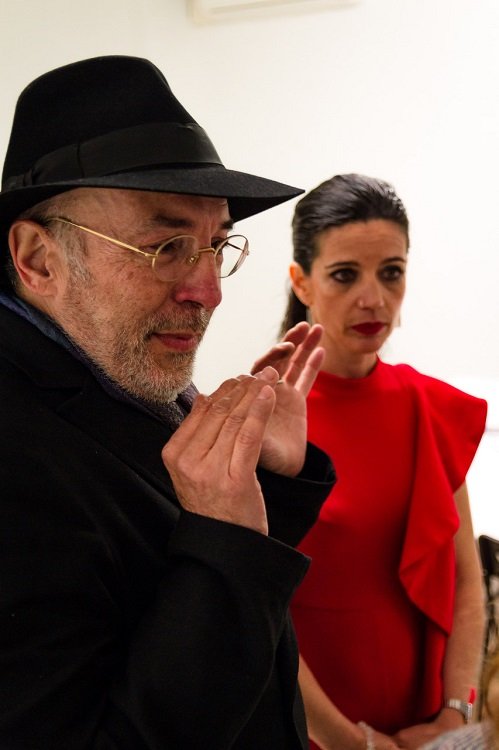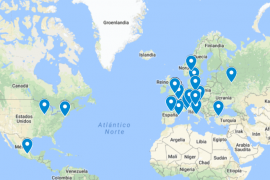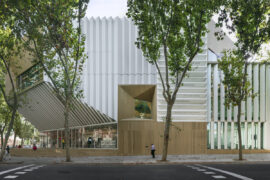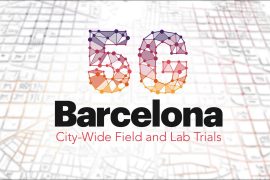April 12th saw the inauguration of Studio Di Stile, a multidisciplinary space dedicated to fashion located in [the city of] Vic, [about 100 km or 60 miles north of Barcelona]. It aims to become a centre to develop training, counselling for professionals in the fashion industry, model and blogger management, and a showroom for designers and creators. Vicenç Mustarós and Meritxell Balmes are the heart and soul of this project, which aims to create a fashion culture at a national and international level and to totally reinvent the whole sector.
The Studio di Stile project is headed by a pivotal character in the industry: Vicenç Mustarós, the director of 080 Barcelona Fashion from 2004 to 2008 and a project adviser in Paris and Antwerp, among other fashion centres. Studio Di Stile centres on specialized training in fashion, design, and fashion consulting, with top national and international professionals, developing in-house methodology with hands-on professional experience. The project is focused on establishing links with international schools, and offering their students a career in the fashion industry. Meritxell Balmes talks to The New Barcelona Post.
What aims are you pursuing with the project?
Studio de Stile was established to foster a culture of fashion in our country. The space is multidisciplinary and there are different fashion related spaces. What we want is to capture talent, and train and position them on the market.
Why did you decide to locate it in Vic?
It was a critical professional and personal decision. Large cities are saturated with expos and events, which makes many activities commonplace, and so they go unnoticed, as well as being more expensive. We believe it is easier to encourage creativity from a smaller city. Vic is well connected, it is a university city. I would like to create an ecosystem around fashion culture there.
How did you and Vicenç Mustarós come to meet?
At the gastro-fashion event we held in Taradell [near Vic]. We agreed that there was no real projection of Catalan fashion. We knew there is talent and there are creative people, but they weren’t visible. There are a lot of emerging and flourishing designers, but they have a very hard time of it, and we hope to be the platform where we can help them grow and develop.
You mention training…
Yes, we are a training centre. Without training there is no talent. In Barcelona there are more fashion schools than in Paris, which is pretty odd. We do introductory, more affordable fashion courses. At the end of the course we are honest and tell them whether they may have a future in the industry. From there we redirect them. Everything is geared to attracting talent.
And once you have the talent?
Once we find them, we accompany them so they have their own space to design, so they can make shared purchases of fabrics and share marketing and sales. We are now at a time of profound changes and they have to be ready to face these changes.
Are you going to work with people who are already producing?
Yes, there are designers who are already working and have a difficult time reaching the market. Stores don’t take risks because of the crisis and people don’t buy because they don’t know the brand. We have a showroom on our premises and we will regularly bring in artists to exhibit their products. We take on the task of bringing together the public and little-known designers, and open doors to our creators.
Is it hard to put together a collection?
Extremely. It is more expensive than painting a picture or writing a book. When you see the prices of the pieces, you know they are fair. We move in a very aggressive world, for two reasons. On one hand, big fashion retailers sell clothes at prices that you know someone is being robbed, and on the other, you have to pay unaffordable prices to wear big brands. In between, there is the creative part, which is the one that works most, since the big retailers copy what the creators do, and the top brands sign up the creators. And the public don’t have access to creators, since they don’t know them. You have to do whatever it takes to get this message across, as I have seen how a lot of talent is lost due to lack of resources.
Do people know what they are buying?
People don’t look at the labels. If they saw where the product is made or what it is made of, they would drop it in an instant. Eating and dressing is something we have to do every day and people have to know what they are doing. This means educating, and we have to get the culture of fashion across to the general public, as well as creating an ecosystem in the city that can become a node where creators have the chance to get ahead with their projects.
What are the most immediate challenges?
Essential to get the classes, the training going. This May, we’re begin introductory classes in fashion design. After that, holding exhibitions, creating events, attracting professionals, getting input from the ecosystem.




















